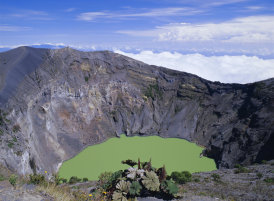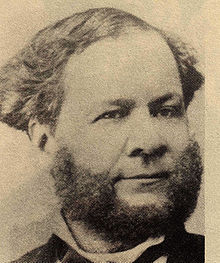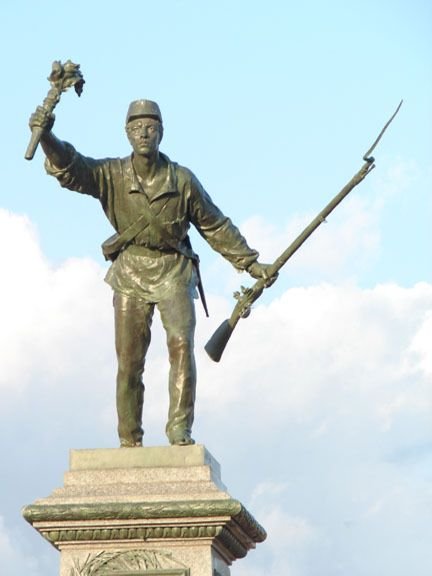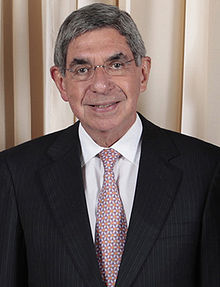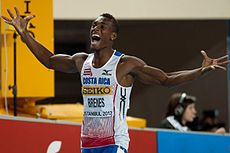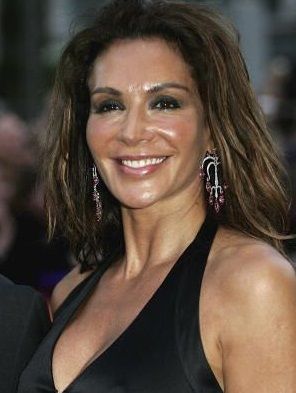The Culture of Costa Rica

The official language of Costa Rica is Spanish. Native languages include Bribrí, as well as others spoken by thousands of Costa Ricans. English is the first foreign language and the second most taught language in Costa Rica, followed by French, German, Italian and Chinese.
As of 2012[update] most Costa Ricans are of primarily Spanish ancestry with minorities of German, Italian, French, Dutch, British, Swedish and Greek ancestry. Whites, castizos and mestizos together comprise 83% of the population.
European migrants used Costa Rica to get across the isthmus of Central America as well to reach the USA West Coast (California) in the late 19th century and until the 1910s (before the Panama Canal opened). Other European ethnic groups known to live in Costa Rica include Russians, Danes, Belgians, Portuguese, Croats, Hungarians, Turks, Armenians and Georgians.
As much as 95 percent of Costa Ricans consider themselves "white." "Whiteness" figures importantly in national identity. The indigenous population that survived the conquest was small and, for the most part, rapidly became Hispanic. In the eighteenth and nineteenth centuries, successful males of African, Indian, or mixed ancestry married poorer "Spanish" women, using "whitening" to assure their children's upward mobility. In the nineteenth century, immigration from Europe and the United States "whitened" the population, particularly the elite. During the twentieth century, the definition of "whiteness" became more inclusive, as elites sought to convince mestizos that they were part of a "homogeneous" nation distinct from the "Indians" elsewhere in Central America.
Costa Rica has four small minority groups: Mulattos, Blacks, Amerindians and Asians. About 8% of the population is of Black African descent or Mulatto (mix of European and black) who are called Afro-Costa Ricans, English-speaking descendants of 19th century black Jamaican immigrant workers.
Concentrated in Limón Province, Afro-Costa Ricans—the descendants of Jamaican and other British West Indians who immigrated in the nineteenth century for work on the Atlantic Railroad, plantations, and docks—are more widely perceived as "black." (These Afro-Costa Ricans are part of an English-speaking Protestant group extending along the entire Caribbean coast of Central America.) Blacks—denied Costa Rican nationality until 1948—were blocked by law and discrimination from working elsewhere, so Limón remained culturally distinct until the mid-twentieth century.
In 1873 the Atlantic Railroad imported 653 Chinese indentured laborers, hoping to duplicate the success of rail projects that used Chinese labor in Peru, Cuba, and the United States. Asians represent 1% of the Costa Rican population, mostly from China, Taiwan and Japan.
There are also over 60,000 Native American or indigenous inhabitants, representing 0.8% of the population. Most of them live in secluded reservations, distributed among eight ethnic groups: Quitirrisí (in the Central Valley), Matambú or Chorotega (Guanacaste), Maleku (northern Alajuela), Bribri (southern Atlantic), Cabécar (Cordillera de Talamanca), Guaymí (southern Costa Rica, along the Panamá border), Boruca (southern Costa Rica) and Térraba (southern Costa Rica).
In Guanacaste and northern Puntarenas, much of the population is descended from Indians and colonial-era slaves. They are Hispanic in culture and language, though their pronunciation resembles Nicaraguan more than central Costa Rican Spanish.
A considerable portion of the Costa Rican population is made up of Nicaraguans.There are also a number of Colombian refugees. Moreover, Costa Rica took in many refugees from a range of other Latin American countries fleeing civil wars and dictatorships during the 1970s and 80s – notably from El Salvador, Chile, Argentina, Cuba and recently from Venezuela.
Other Central Americans had long come to Costa Rica to work in agriculture, especially in the banana zones. In the 1980s, Nicaraguans and Salvadorans fled violence and economic crises to work as farmhands, laborers, servants, and street vendors.
Many foreigners have taken advantage of the Pensionado Law, which grants residency to investors and exempts them from import duties. Most are retired United States citizens, but Chinese, Iranians, Arabs, Europeans, and Latin Americans also settled in Costa Rica under this law.
By the late twentieth century, allusions in textbooks and political discourse to "whiteness," or to Spain as the "mother country" of all Costa Ricans, were diminishing, replaced with a recognition of the multiplicity of peoples that make up the nation.
The Tican Identity

Every nationality has its
own sense of identity. Costa Ricans have their own unique traits that
derive from a profoundly conscious self-image which orients much of their
behavior as both individuals and as a nation.
The Ticos--the name is said to
stem from the colonial saying "we are all hermaniticos (little
brothers)"--feel distinct from their neighbors by their "whiteness" and relative
lack of indigenous culture. Ticos identify themselves first and foremost as
Costa Ricans and only Central Americans, or even Latin Americans, as an
afterthought.
They're extremely critical of
themselves, as individuals and as a society. Costa Ricans, too,
regardless of wealth or status, act with utmost humility and judge as uncouth
boasting of any kind. Their behavior and comments are dictated by quedar
bien, a desire to leave a good impression. Like the English, they're
terribly frightened of embarrassing themselves, of appearing rude or vulgar
(tactless and crude people are considered "badly educated") or unhelpful. As
such, they are exceedingly courteous, almost archaically so (they are prone, for
example, to offer flowing compliments and formal greetings). It is a rare
visitor to the country who returns home unimpressed by the Costa Ricans'
celebrated cordial warmth and hospitality.
Ticos are also as tranquil
as doves. Violence of any kind is extremely rare. The religious fervor common in
Mexico and the Central American isthmus is unknown. And the law-abiding Ticos
respect and have faith in their laws, their police force, and state institutions
(except, it seems, on the roads). In fact, a distaste for anything that impinges
on their liberty or that of their nation is just about the only thing that will
make their hackles rise. Attempts to modernize the police force, for example,
bring floods of editorial columns and popular outrage protesting "militarism."
Democracy is their most
treasured institution, and the ideal of personal liberty is strongly cherished.
Costa Ricans are intensely proud of their accomplishments in this arena and show
it at 6 p.m. on each 14 September, on the eve of Independence Day, when the
whole nation comes to a halt and everyone gustily sings the national anthem.
A progressive people, Ticos
revere education. "We have more teachers than soldiers" is a common boast and
framed school diplomas hang in even the most humble homes. Everyone, too, is
eager for the benefits of social progress.

Sociologists, however, suggest that
Costa Ricans are very conservative people, suspicious of experimentation that is
not consistent with a loosely held sense of "tican tradition." Changes,
too, supposedly should be made poco a poco, little by little. Ticos share
the fatalistic streak common to Latin America: one that accepts things as they
are and promotes resignation to the imagined will of God.
Many old virtues and values
have faltered under the onslaught of foreign influence, modernity, and social
change. Drunkenness, drug abuse, and a general idleness previously unknown in
Costa Rica have reared their ugly heads. And theft and burglary are seriously on
the rise. But most Costa Ricans remain strongly oriented
around traditional values based on respect for oneself and for others.
The
cornerstone of society is still the family and the village community. Social
life still centers on the home and family bonds are so strong that foreigners
often find making intimate friendships a challenge. Nepotism--using family ties
and connections for gain--is the way things get done in business and government.
You can count on a Tico's
loyalty, but not on his punctuality. Private companies, including most travel
businesses, are efficient and to a greater or lesser degree operate hora
americana: punctually. But don't expect it. Many Ticos, particularly in
government institutions, still tick along on turtle-paced hora tica.
"[[questiondown]]Quien sabe?" ("Who knows?") is an oft-repeated phrase.
So too "[[exclamdown]]Tal vez!" ("Perhaps!") and, of course,
"[[exclamdown]]Mañana!" ("Tomorrow!").
Blacks in Costa Rica
Costa Rica's approximately 40,000 black people are the nation's largest minority. For many years they were the target of racist immigration and residence laws that restricted them to the Caribbean coast (only as late as 1949, when the new Constitution abrogated apartheid on the Atlantic Railroad, were blacks allowed to travel beyond Siquerres and enter the highlands). Hence, they remained isolated from national culture. Although Afro-Caribbean turtle hunters settled on the Caribbean coast as early as 1825, most blacks today trace their ancestry back to the 10,000 or so Jamaicans hired by Minor Keith to build the Atlantic Railroad, and to later waves of immigrants who came to work the banana plantations in the late 19th century.
Costa Rica's early black population was "dramatically upwardly mobile" and by the 1920s a majority of the West Indian immigrants owned plots of land or had risen to higher-paying positions within the banana industry. Unfortunately, they possessed neither citizenship nor the legal right to own land. In the 1930s, when "white" highlanders began pouring into the lowlands, blacks were quickly dispossessed of land and the best-paying jobs. Late that decade, when the banana blight forced the banana companies to abandon their Caribbean plantations and move to the Pacific, "white" Ticos successfully lobbied for laws forbidding the employment of gente de color in other provinces, one of several circumstances that kept blacks dependent on the largesse of the United Fruit Company, whose labor policies were often abhorrent. Pauperized, many blacks migrated to Panama and the U.S. seeking wartime employment. A good proportion of those who remained converted their subsistence plots into commercial cacao farms and reaped large profits during the 1950s to '60s from the rise of world cacao prices.

West Indian immigrants played a substantial role in the early years of labor organization, and their early strikes were often violently suppressed (Tican folklore falsely believes in black passivity). Many black workers, too, joined hands with Figueres in the 1948 Civil War. Their reward? Citizenship and full guarantees under the 1949 Constitution, which ended apartheid. Costa Rica's black population has consistently attained higher educational standards than the national average and many blacks are now found in leading professions throughout the nation. They have also managed to retain much of their traditional culture, including religious practices rooted in African belief about transcendence through spiritual possession (obeah), their rich cuisine (codfish and akee, "rundown"), the rhythmic lilt of their slightly antiquated English, and the deeply syncopated funk of their music.
Indians in Costa Rica
Costa Rica's indigenous peoples have suffered abysmally. Centuries ago the original Indian tribes were splintered by Spanish conquistadores and compelled to retreat into the vast tracts of the interior mountains (the Chorotegas of Guanacaste, however, were more gradually assimilated into the national culture). Today, approximately 9,000 Indian peoples of the Bribrí, Boruca, and Cabecar tribes manage to eke out a living from the jungles of remote valleys in the Talamanca Mountains of southern Costa Rica, where their ancestors had sought refuge from Spanish muskets and dogs. There are currently 22 Indian reserves for eight different Indian groups.

Although various agencies continue to work to promote education, health, and community development, the Indians' standard of living is appallingly low, alcoholism is endemic, and they remain subject to constant exploitation. In 1939, the government granted every Indian family an allotment of 148 hectares for traditional farming, and in December 1977 a law was passed prohibiting non-Indians from buying, leasing, or renting land within the reserves. Despite the legislation, a majority of Indians have gradually been tricked into selling their allotments or otherwise forced off their lands. Poor soils and rough rides have not kept colonists in search of land and gold from invading the reserves. Banana companies have gradually encroached into the Indian's remote kingdoms, buying up land and pushing campesinos onto Indian property. Mining companies are infiltrating the reserves along newly built roads which become conduits for contamination, like dirty threads in a wound.
In 1991, for example, an American mining company was accused of illegally exploring within the Talamanca Indian Reserve. And hotel developers are violating the protective laws by pushing up properties within coastal reserves. Indigenous peoples complain that the National Commission for Indigenous Affairs (CONAI) has proved particularly ineffective in enforcing protections. "When the moment arrives for CONAI to stand up for the Indian people, they don't dare. They duck down behind their desks and wait for their paychecks to arrive," says Boruca Indian leader José Carlos Morales. The various Indian clans cling tenuously to what remains of their cultures. The Borucas, who inhabit scattered villages in tight-knit patches of the Pacific southwest, have been most adept at conserving their own language and civilization, including matriarchy, communal land ownership, and traditional weaving. For most other groups, only a few elders still speak the languages, and interest in traditional crafts is fading. Virtually all groups have adopted elements of Catholicism along with their traditional animistic religions, Spanish is today the predominant tongue, and economically the Indians have for the most part come to resemble impoverished campesinos.

Other Ethnic Groups
Immigrants from many nations have been made welcome over the years (between 1870 and 1920, almost 25% of Costa Rica's population growth was due to immigration). Jews are prominent in the liberal professions.
There is a Quaker community of several hundred people centered on Monteverde, where they produce goudas, cheddars, and monterico cheeses. Germans have for many generations been particularly successful as coffee farmers. Italians have gathered, among other places, in the town of San Vito, on the central Pacific coast. Tens of thousands of Central American refugees from El Salvador, Guatemala, and Nicaragua still find safety in Costa Rica, where they provide cheap labor for the coffee fields. The Chinese man quoted in Paul Theroux's Old Patagonia Express (see p. xiii) is one of several thousand Chinese who call Costa Rica home.
Many are descended from approximately 600 Orientals who were imported as contract laborers to work on the Atlantic Railroad (an 1862 law prohibiting immigration by Asians had been lifted on the understanding that the Chinese would return home once the work was complete). The Chinese railroad workers were worked miserably and paid only one-fifth of the going wage. In recent years many chinos have immigrated freely and are now conspicuously successful in the hotel, restaurant, and bar trade (Theroux's Chinese man owned one of each), and in Limón as middlemen controlling the trade in bananas and cacao.
Classes and Castes
Many upper-class families are descended from a few Spanish conquistadores. Levels of interaction between social classes were nonetheless high well into the twentieth century. Members of prominent families intermarried with other groups, especially wealthy European, Latin American, and North American immigrants. In Guanacaste and northern Puntarenas more rigid patterns of class relations are the norm.The coffee elite, which dominated politics and society from the mid-nineteenth to the mid-twentieth century, derived most of its wealth from coffee processing and the export trade, not from ownership of plantations. Coffee also gave rise to a rural middle class. The Costa Rican middle class constitutes a larger proportion of the population— perhaps one-quarter—than in other Central American countries.
Costa Rica is no longer a country of peasants. The opening of the University of Costa Rica in 1940 and the expansion of the public sector after 1948 provided new opportunities for upwardly mobile young people. Yet poverty remained significant, affecting one-fifth of the population at the close of the twentieth century.
Nonetheless, in 1999, the United Nations ranked Costa Rica fourth among developing nations worldwide that have made progress in eliminating severe poverty.
Costa Rica has made remarkable strides in improving living standards. Most Costa Ricans enjoy access to free health care, basic education, and social services. Free-market policies have forced reductions in spending, but health and education indicators remain impressive.

